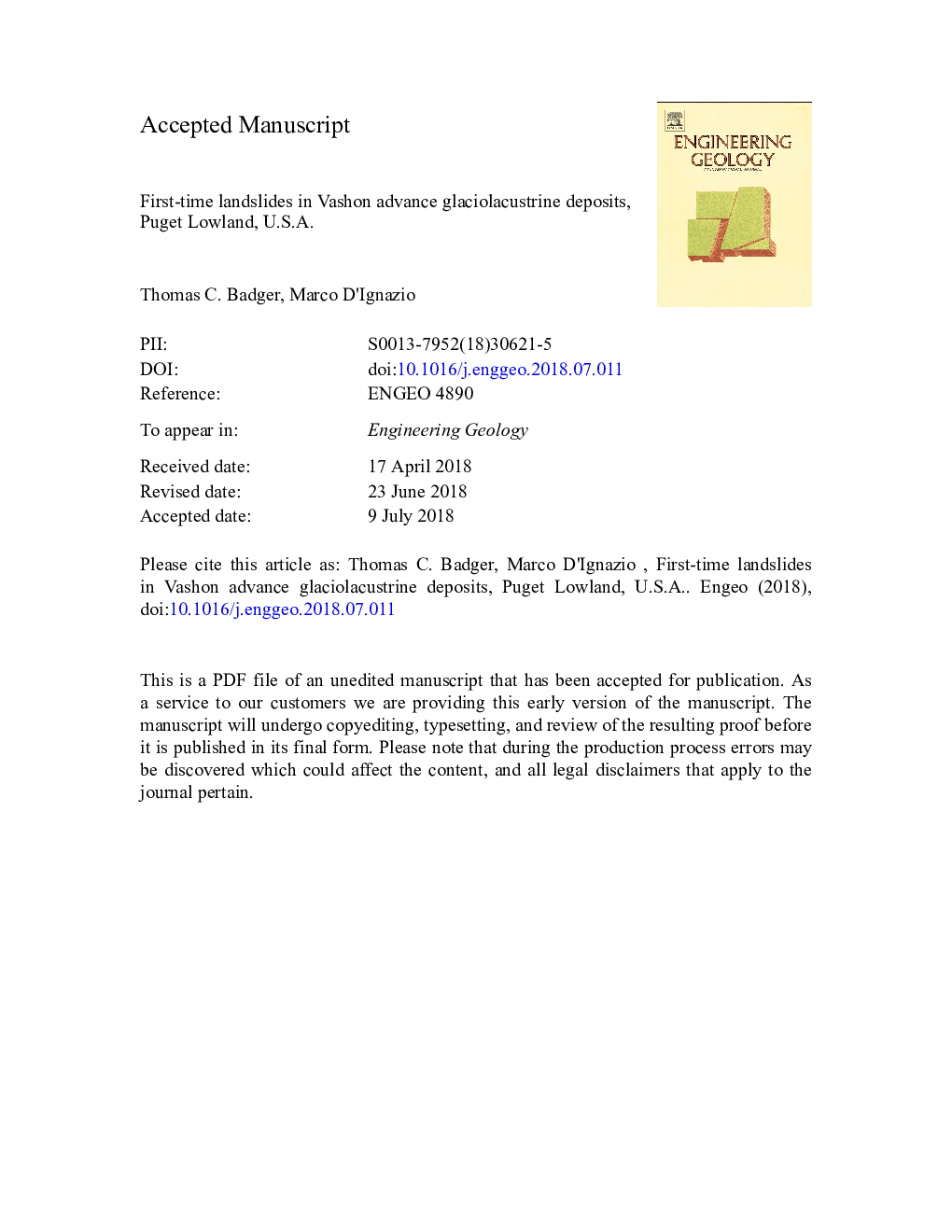| Article ID | Journal | Published Year | Pages | File Type |
|---|---|---|---|---|
| 8915814 | Engineering Geology | 2018 | 29 Pages |
Abstract
Qglv deposits are overconsolidated, very stiff to hard, laminated to massive, silt and clay. Shear strength is anisotropic, with cohesion being a significant component of bedding-parallel strength and friction dominating strength perpendicular to bedding. Hydraulic conductivity is likely also anisotropic. Multi-year records of pore pressures within Qglv deposits show no to minor seasonal flux; only minor pore pressure responses to multi-day to multi-week episodes of heavy precipitation have been detected. Back analyses using limit-equilibrium methods and peak anisotropic strength under drained conditions demonstrate initial stability of the slopes. Instability occurs near the fully softened strength. We conclude that, over the long term, loss of cohesive strength, rather than hydroclimatic pore pressure response, is the more important contributor to diminishing stability and, in some cases, initiation of first-time landslides in Qglv deposits. The shape and location of the slide surface is strongly influenced by strength anisotropy and stress state. Sliding surfaces developed near the basal contact of the Qglv deposits in all of the five studied landslides. Higher stress states associated with increasing sequence thickness of the landslide masses decrease stability. The length of the basal slide surface, and thus the aspect ratio of the landslide mass, appears to increase proportionally with sequence thickness of the landslide mass.
Keywords
Related Topics
Physical Sciences and Engineering
Earth and Planetary Sciences
Geotechnical Engineering and Engineering Geology
Authors
Thomas C. Badger, Marco D'Ignazio,
